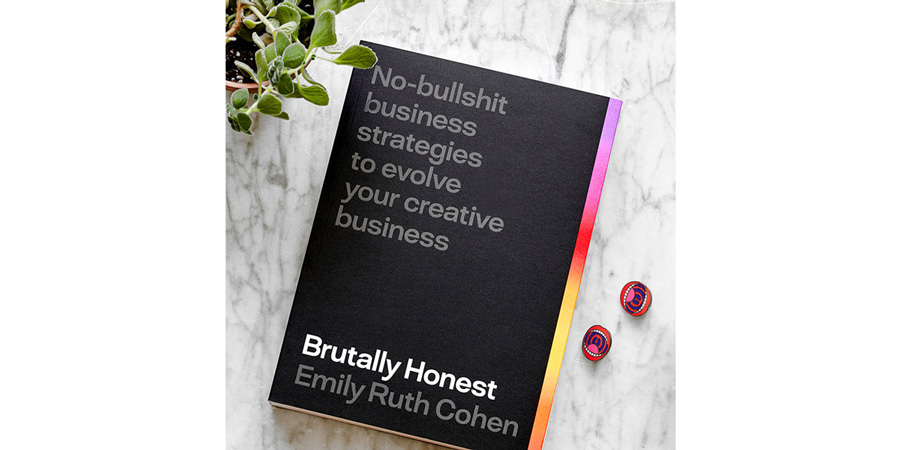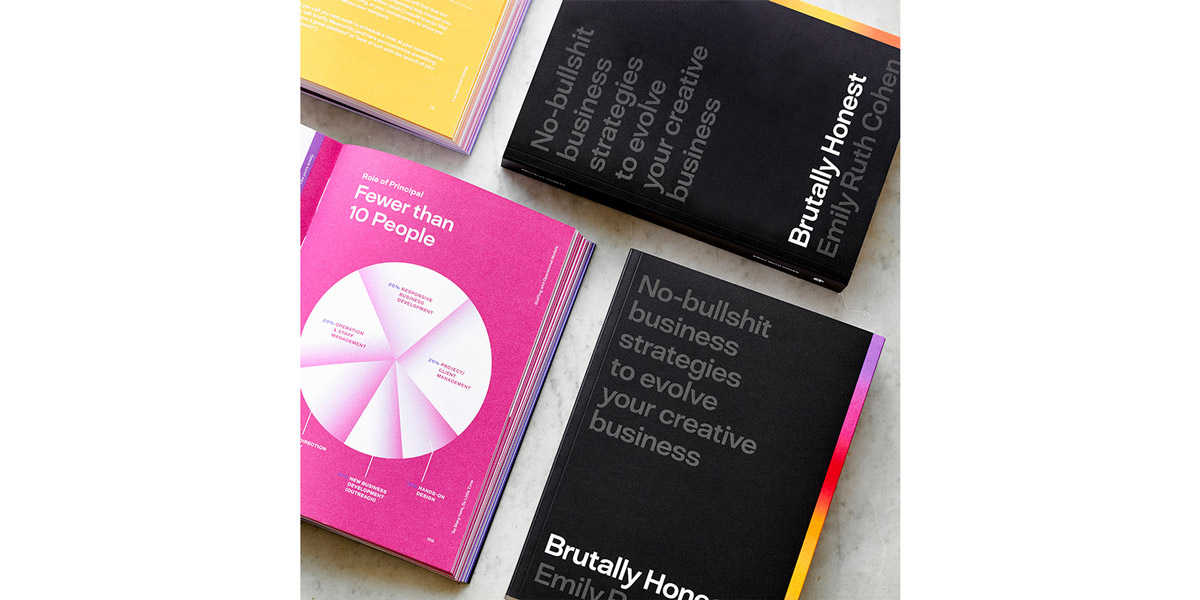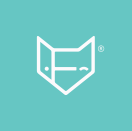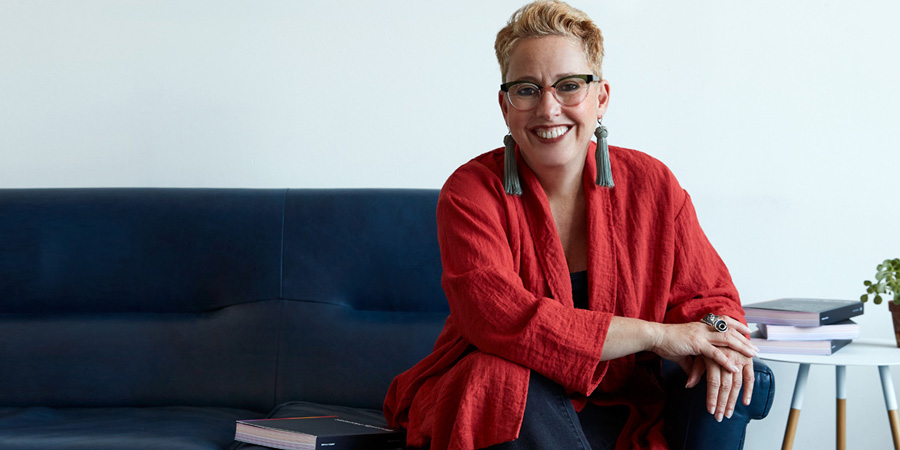Q: I’ve read your book, and coming from an agency background, I wish this had been around many years ago! It would have saved me from making some mistakes and - equally as important - could have provided guidance that would have made growing the business a smoother ride. Tell us a little about yourself, what motivated you to create this book, and where the inspiration for the name, Brutally Honest, came from.
A: I’m a business consultant for creative professionals. Typically, I work with the principals of small to mid-size creative firms, but I also (selectively) take on corporate clients and/or larger creative firms/teams. Over the 30 years I’ve been consulting, I have developed, tested, and curated key business insights and strategies that have helped design firms become more effective, profitable, and fun to work at. My consultations encompass everything from positioning to new business development, from pricing to proposals and from staffing and client management to everything in-between.

I’m really happy you said that if the book were around years ago, it would have saved you from making some mistakes. That was one of the reasons I wrote the book: to reach a larger audience and share best business practices with many more people, to effect larger change in our profession. But I also wrote the book because I’ve always felt there was a need for a different type of business book. One that is smart and insightful, yet well-designed, fun to read and with lots of actionable and easy-to-digest insights, tips, and checklists. I also wanted to share real-world and honest case studies from industry-leading design firm principals that feature each firm’s best business idea or practice. The book’s name is inspired by my well-known ability to tell it like it is, with no bullshit. I’m direct and to the point, I find that has more impact and effects faster change by my clients. I’m a New Yorker, after all. The book is just me, in book form.
Q: Brutally Honest devotes a Chapter to Positioning. What do you see as the greatest challenge for a creative company in developing their own positioning?
A: Design firms’ positioning is often very reactionary and driven by the requests and needs of their existing contacts and clients. The biggest mistake most firms make in terms of positioning is not taking control of their firm’s own story - they let others tell them who they are, what they do, and even how they work. Take back control! You should make these decisions, and they should be well thought out yet also realistic and achievable.
Q: You’ve compared running a creative firm to being a parent and I’d love for you to share your key insights on this.
A: There are so many reasons, but essentially being a parent is both rewarding and frustrating, and so is running a creative firm. Shit happens. And, just like children, employees and clients thrive on structure, rules, praise, and encouragement.

Q: You’ve identified that metrics are a sore spot for many firms and you nailed a lot of the excuses for not getting the numbers pulled together. Would you share a couple of key questions you’d recommend that a creative firm ask clients that can lead to getting the right information?
A: It’s really just two questions. During the kickoff meeting ask your clients "how do they measure success?" Then, ask them: "when do you measure it?" The "how" is the hardest part, as some clients don’t know how to measure success, haven’t thought about it, or don’t want to share it. For those who don’t know how, you may have to be advisory and help them define this measurement. If you’re an expert or specialist, you can recommend ways your other clients have measured success. The "when" is so you can add a date in your calendar to go back and get those metrics from the client! That requires follow up, something designers aren’t always great at.
Q: New business: a topic that causes fear and trepidation among agency principals. You cover a lot about strategies and tools, and one of the ideas that really resonated for me was your "Relationship Curation Strategy". Can you share a couple of the ideas you think can really make a difference in getting that next win?
A: Relationship curation is all about reaching out one-to-one and making personal connections with your target prospects and doing this week by week, and making it a habit. It is not something you do once in a while, "when you have time". What ensures your next win is having a focus on building authentic relationships built on trust, and being what I call "lovable". Don’t try to "sell" or "win": just focus on building a meaningful, long-lasting relationship and making a personal connection.
Q: Pricing is another hot topic and one that you cover well. I’d love to know if you think creatives should price hourly or by value, and why?
A: By value. End of conversation. Hourly pricing positions you as a "vendor" rather than a value-added expert. That said, there are some exceptions, which I outline in more depth in my book.
Q: Size does matter and you’ve outlined some things that will help CEOs decide what/who to hire next. What would you say is the ideal ratio of designers to project managers? Why?
A: On average, for every 4-5 full-time creative team members, you need to hire 1 person dedicated to project/client management; a 4-5:1 ratio. The more digital projects you do, the lower the ratio (3-4:1). As your team grows in size, it becomes much more difficult to find and hire those exceptional designers who have the right- and left-brain skill sets required to both design and manage projects and clients.
Q: Brutally Honest also tackles some of the nuts and bolts, including ‘must-have’ tools, for running a successful creative firm. We were honored that you shared FunctionFox as a tool that can help project and time-tracking. Can you share why you think tracking time is important?
A: Essentially, accurate historical data that includes standard or average hours of work per project, client, and activity/task allows you develop metrics that can support a variety of important decisions in your business. For example: you can use time-tracking data to price more accurately and to demonstrate a need to increase headcount or to help you identify ways to streamline productivity and efficiency. Who doesn’t love this?
Q: The list of typical ‘billable’ versus ‘non-billable’ tasks is very helpful. Is this something that you see as a struggle for firms? How much time SHOULD be billable for a typical firm as a percentage of all hours?
A: Your target billable efficiency rate is different for different roles. But no one should be more than 90% billable (and even that is high), as they need some downtime to do non-billable activities like cleaning-up their files/desk, professional development activities, participating in studio-specific meetings, attending new business meetings, filling out time sheets, etc.
Q: If you could leave our readers with the ONE thing they MUST DO in order to run a sustainable, profitable creative company, what would that be?
A: Embrace your role as leader. Without a defined vision and clear business goals, your company will meander and won’t have a foundation in which to move forward and make smart, important decisions.
Q: Are there any other words of wisdom you’d love to share?
A:
Read my book! I’m very proud of it.
Also, practice ethical business practices. What you do and how you act, impacts and reflects back
on our industry.

